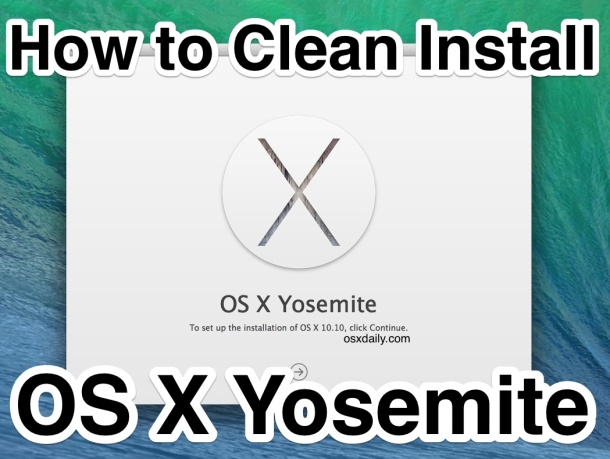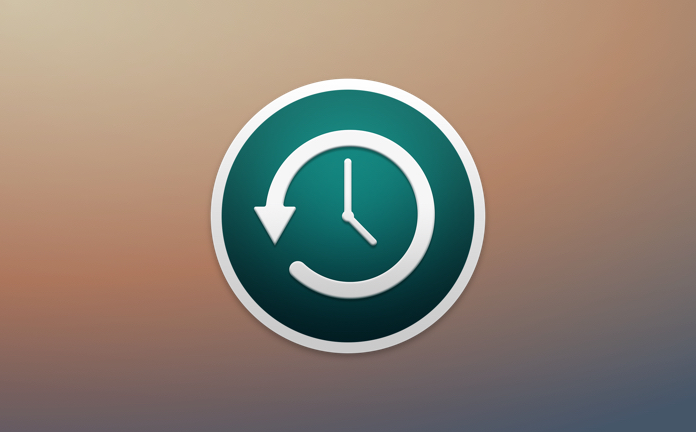Fresh Install Osx Yosemite
The Application Install OS X Yosemite will appear in /Applications. STEP 2: Create a Bootable USB Drive with UniBeast Take a deep breath and take your time- this is pretty simple, but it's easy to miss things if you rush. Installing OSX Yosemite - Fresh or upgrade? Discussion in 'OS X Yosemite (10.10)' started by johncogan, Oct 20, 2014. I'm thinking of doing a clean install. I had the public beta of Yosemite and the last two PBs and the general release have all made my 2011 MacBook Pro sluggish. I know it is a 3 year old machine, but it was always pretty. How can the answer be improved?
If you use your Mac frequently, then you surely are excited about Yosemite, Apple’s latest version of OS X. The new system is not only the largest departure from past versions, but it also brings a new stunning look, both minimal and colorful.
As usual, Yosemite is free for anyone with a Mac that supports it. You can check if your computer qualifies below:
- iMac (Mid-2007 or later)
- MacBook (13-inch Aluminum, Late 2008), (13-inch, Early 2009 or later)
- MacBook Pro (13-inch, Mid-2009 or later), (15-inch, Mid/Late 2007 or later), (17-inch, Late 2007 or later)
- MacBook Air (Late 2008 or later)
- Mac Mini (Early 2009 or later)
- Mac Pro (Early 2008 or later)
- Xserve (Early 2009)
Downloading and performing a quick install is fairly easy as well: simply get Yosemite from the Mac App Store and double-click on it once it is done downloading.
However, it is recommendable to do a clean install instead of a simple upgrade, since a clean install gets rid of all the clutter of past operating systems and ensures Yosemite behaves like new.
That said, performing this type of install requires some extra care and a few additional steps. So let’s go through all you have to do in order to perform a clean install the right way.
Ready? Let’s get started.
Prior to Installation
Needless to say, if you are going to completely erase your Mac’s hard drive in order to install a fresh OS, you need to take a few precautionary measures. So before starting the clean install process, make sure you…
- Have a complete backup of everything in your Mac
- Remember the passwords of all the apps that you frequently work with
- Have all the licenses of apps you bought outside of the Mac App Store
- Export a backup of all your bookmarks and other browser information
 Useful Tip: See how you can transfer a bootable backup of your computer to an external hard drive. This is a great idea for anybody who heavily relies on their Mac.
Useful Tip: See how you can transfer a bootable backup of your computer to an external hard drive. This is a great idea for anybody who heavily relies on their Mac.Done with that? Great. Now let’s move on.
Create a Bootable Yosemite USB Drive
In order to perform a clean install of Yosemite, you will need to have a copy of just the installer on a USB. This is trickier than you think, since the original Yosemite file is a self-contained app that, when used, automatically performs a quick install (not a clean one) and then deletes itself.
This is convenient for most users, but it also makes the original Yosemite installer useless if you want a clean install. So in order to get only the installer file on a bootable USB drive, you have a couple of options.
Important Note:How To Fresh Install Os X On Macbook Pro
Make sure to download the Yosemite file from the Mac App Store and to plug your USB drive into your Mac before you begin.Use a Dedicated App
Step 1: This is definitely the easiest way to create your bootable Yosemite USB drive. To do it, first download the latest version of DiskMaker and start the app.
Step 2: Click on the Yosemite (10.10) button. The app will then search for the install file (that you should have already downloaded). Once it finds the file, it will prompt you to use it to create your bootable USB. Verify the location of the file and accept.

Step 3: After that, select the kind of USB drive you will use and then click the Erase then create the disk button for DiskMaker to do its magic. The result should be an install USB drive of more than 5GB in size.
Now, if for some reason this method doesn’t work for you or you just don’t want to use it, then here’s the second method, which makes use of the Terminal.
Important Note: Don’t forget to only use the Terminal if you feel comfortable with it, since it is quite advanced and you can mess things up in your Mac if you take the wrong turn.Use the Terminal
Step 1: Open the Terminal on your Mac. Then copy and paste the following code into it:
sudo /Applications/Install OS X Yosemite.app/Contents/Resources/createinstallmedia --volume /Volumes/Untitled --applicationpath /Applications/Install OS X Yosemite.app --nointeractionOnce you do, make sure your USB drive is plugged into your Mac, then authenticate with your password and press Return to run the command.
After a few minutes you should have your Yosemite installation USB drive ready to use.
Clean Install OS X Yosemite
Step 1: With your bootable USB plugged to your Mac, restart it while pressing the Alt key on your keyboard. This will prompt your system to display all the drives available. Select the orange one to start the installation.
Step 2: Next, you will be presented with a window showing the basic OS X utilities. Select the bottom option to open Disk Utility. It is time to erase your Mac’s hard drive.
Warning!How To Fresh Install Osx Yosemite
Make absolutely sure all of the files you want to keep are backed up somewhere else; once you wipe your hard drive, there’s no turning back.Step 3: On Disk Utility select your Mac’s hard drive as shown in the image below and then click on the Erase tab. Then name your hard drive and make sure it is in the Mac OS Extended (Journaled) format.
Once you double check all of this, click the Erase… button to start formatting your Mac’s hard drive.
Step 4: Once this process is finished, exit Disk Utility and now select Install OS X to finally start installing Yosemite.
After several installation screens, the stunningly beautiful new version of OS X will be ready for you to start using.
Just configure the system, get all your favorite apps and info from the web, and you’ll be ready to go.
Top Image Credit:Mike Liu
Also See#OS X #yosemiteDid You Know
Times Square is one of the most geotagged places on Instagram.